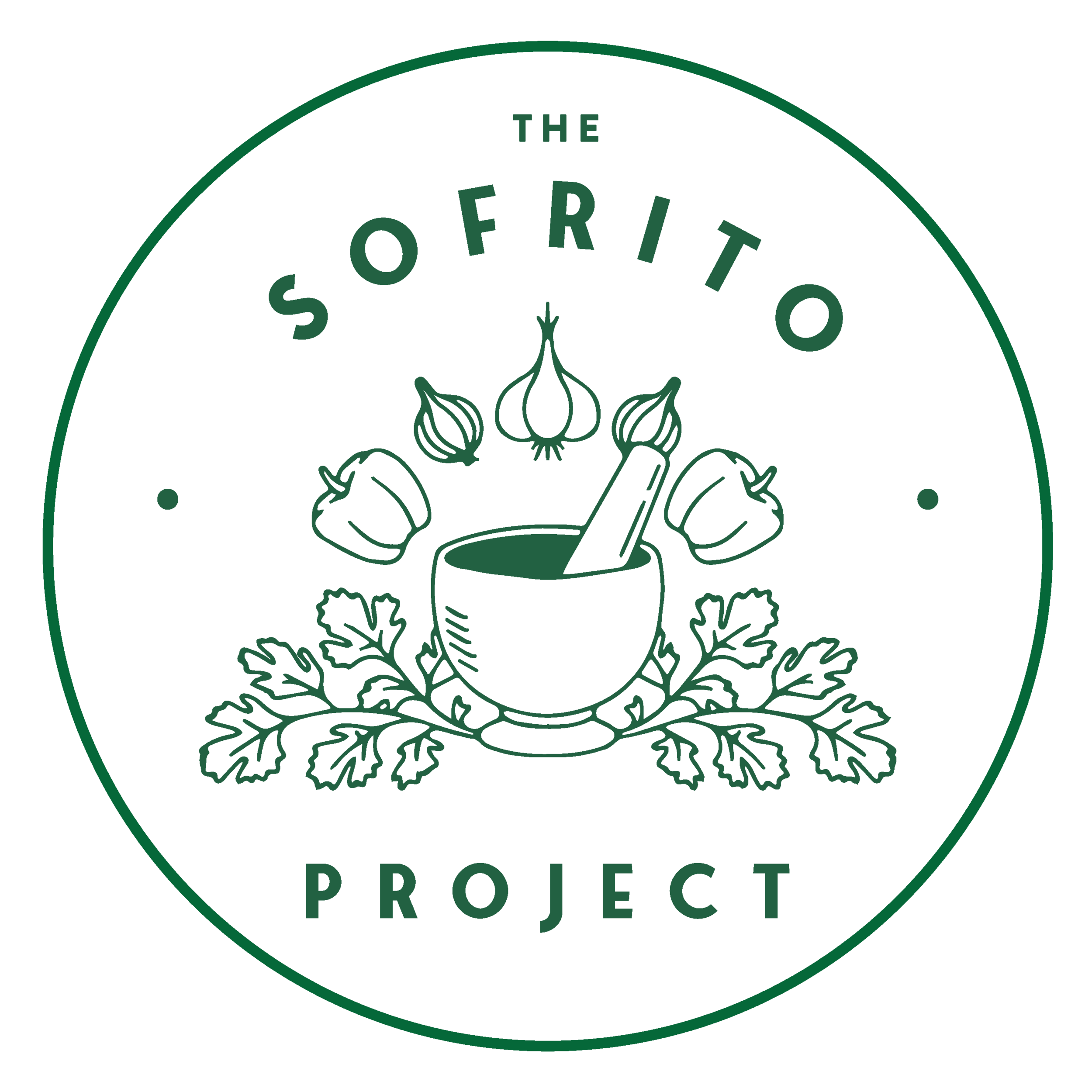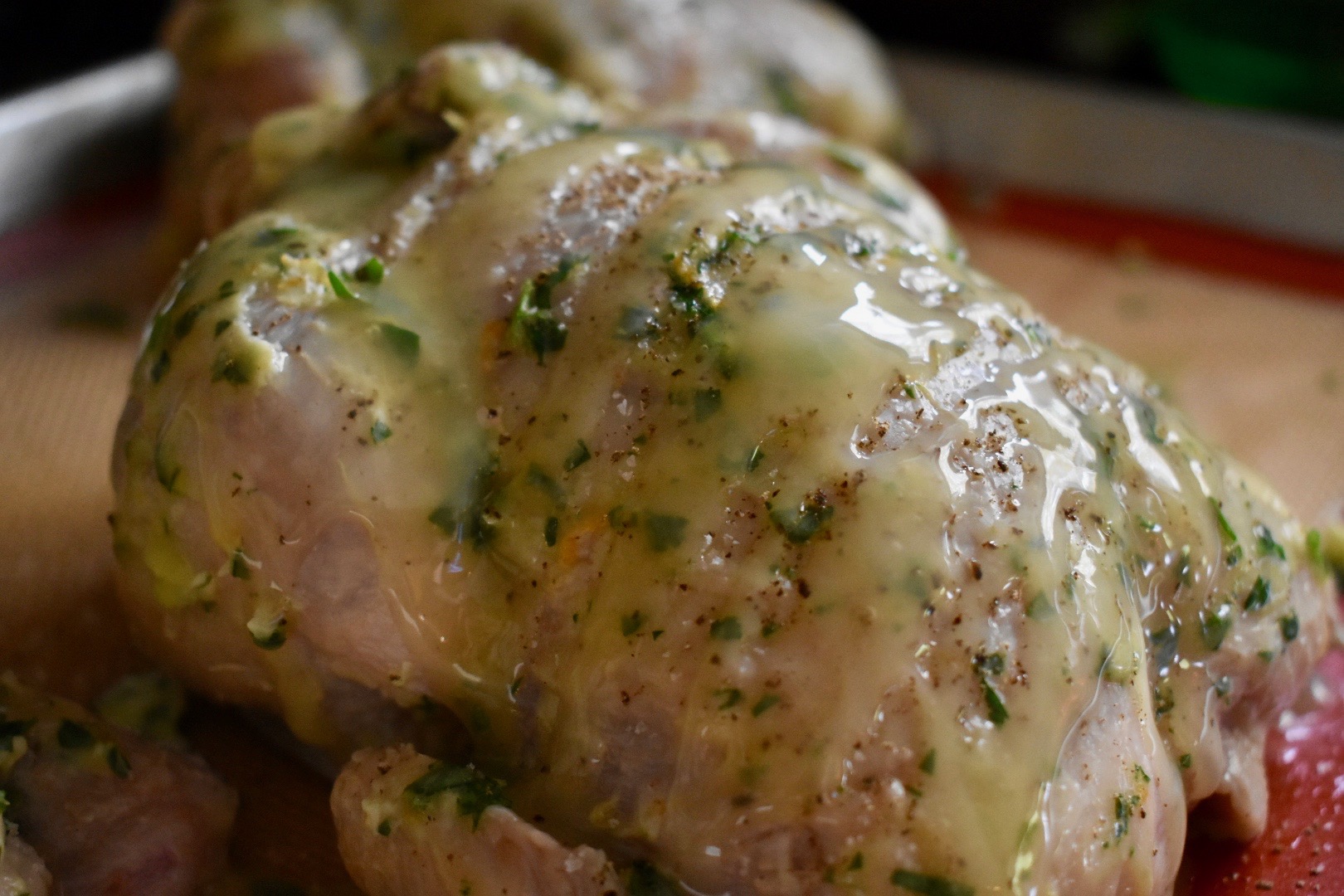Duck Fat Roasted Cornish Hens
Okay, so hear me out. I don’t like the hassle of roasting a turkey for the holidays. Mostly because I’m definitely not a morning person and I’m not trying to wake up insanely early on my day off from the kitchen to be in the kitchen all day. So, my solution to the problem? Cornish hens. These little babies roast in about an hour and some change and everyone gets to enjoy their own little hen (leftovers included).
The hens are typically sold frozen in pairs and I got three packages since I was hosting a small dinner for Thanksgiving this year. Keep in mind if you get the frozen hens, you’re going to want to defrost them well before brining and roasting them; typically about three days to fully defrost and thaw in the fridge with the brining done overnight. For example, I had these babies thawing in the fridge by the 18th to be ready by the 22nd for Thanksgiving dinner this year.
A roasted chicken is my favorite way to have something fancy on the dinner table with minimal effort and these hens are no exception. There are a few steps here for maximizing your prep work without dealing with too much to do on the big day you’re having your dinner, so let’s get going!
Duck Fat Roasted Cornish Hens
Cook time: 1 hour and 45 minutes, including prep
Serves: 6 (one hen per person) or 12 (1/2 hen per person)
6 cornish hens, fully thawed and brined (see note)
6 large fresh sage leaves, whole
6 garlic cloves, whole
6 lemon wedges
1 roll citrus herb compound butter, melted
1/2 cup duck fat, about a heaping tablespoon per bird
Kosher salt
Black pepper
Note: the day before you plan on roasting the hens, liberally season the thawed hens with the dry brine. Go crazy with it. Store them on the bottom of your fridge on a sheet pan or roasting pan uncovered overnight. The next day, gently rinse under cold water to completely remove the brine. Pat dry, let the hens rest for at least 30 minutes, and then continue with the recipe below.
Preheat the oven to 425ºF.
In a very large roasting pan, or two half sheet pans, arrange the birds so they have room to roast freely (three per pan if you’re doing half sheets). You don’t want to overcrowd the pan. This ensures that the birds get nice and golden on all sides while roasting. Stuff one sage leaf, one garlic clove, and a lemon wedge into each hen.
Next, tuck the wing tips underneath the hen to avoid them from burning while roasting. Fun fact: to truss the legs without using twine, you can easily keep the legs together with using the excess skin of the bird! Using kitchen shears or a sharp paring knife, cut a small hole opposite of the side you want to tuck the leg into. Take the end of the drumstick and place it into the hole and repeat the step with the other side. If you’re more of a visual person like I am, check out the method here.
Once the hens are all tucked up and ready to go, liberally pour the melted compound butter, all over the skin and under, gently lifting the skin without tearing it. Rub the melted butter all over the hens. Then, take the duck fat and drizzle it all over the birds. Season liberally with kosher salt and freshly cracked black pepper.
Once all of the hens are generously slathered in the compound butter and duck fat, roast them in the oven for 1 hour. At the 30 minute mark, rotate the pan and baste with a little more duck fat on each bird. Continue roasting. Once the hour has passed, temp the birds to ensure they’ve reached at least 165ºF internally at the thickest part of the thigh.
Personally, I take out the birds when they reach at least 155ºF and let them rest for at least 15 minutes to allow carryover cooking and time for them to rest before serving but it’s definitely up to you. Either way just make sure they’re at least 165ºF for safe consumption!
Remember, you don’t have to make these for a holiday and can easily scale down the recipe for an awesome and romantic dinner for two. Because come on, there’s nothing fancier than having an adorably roasted hen on your plate for you and your boo.
¡Buen provecho!



